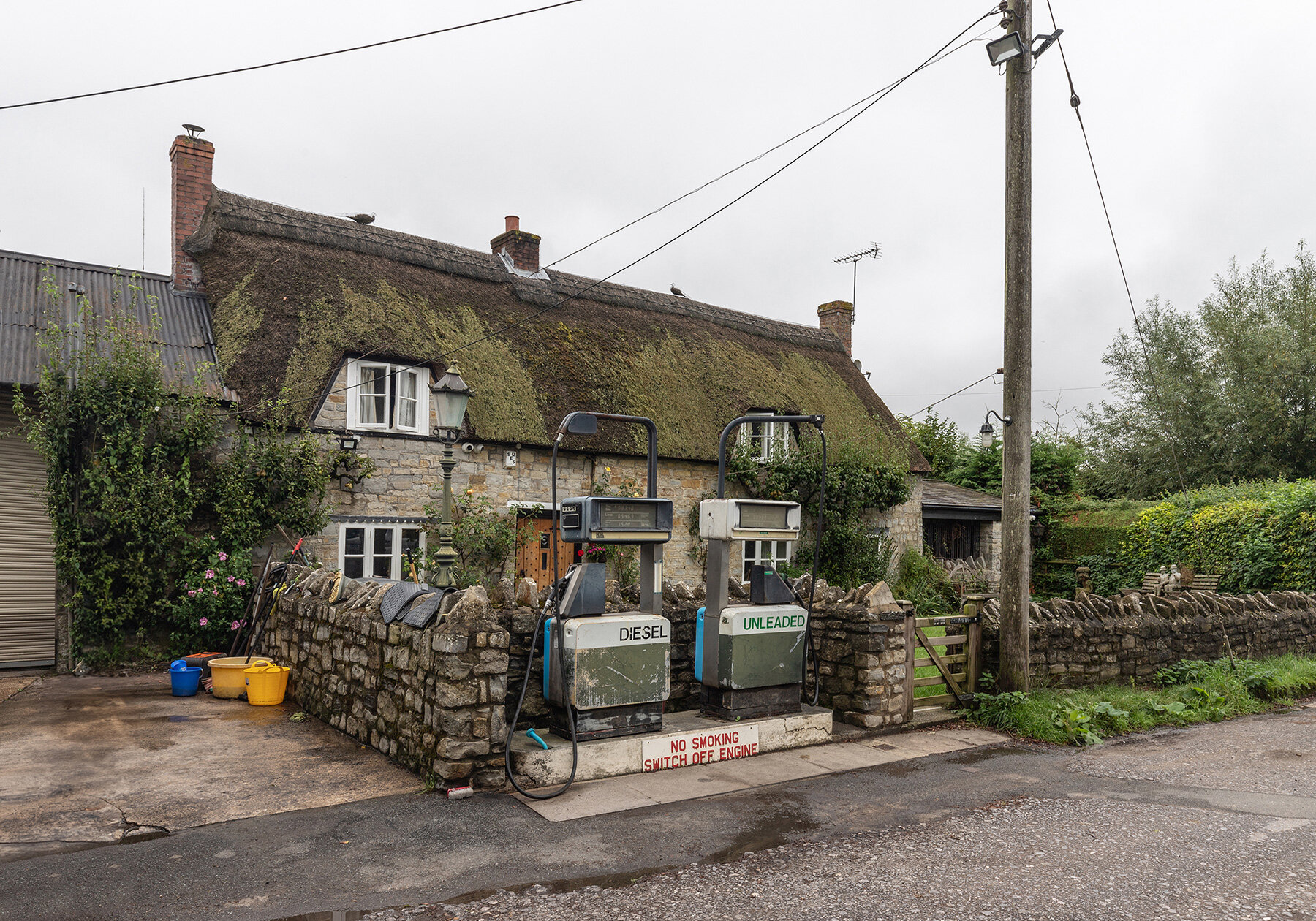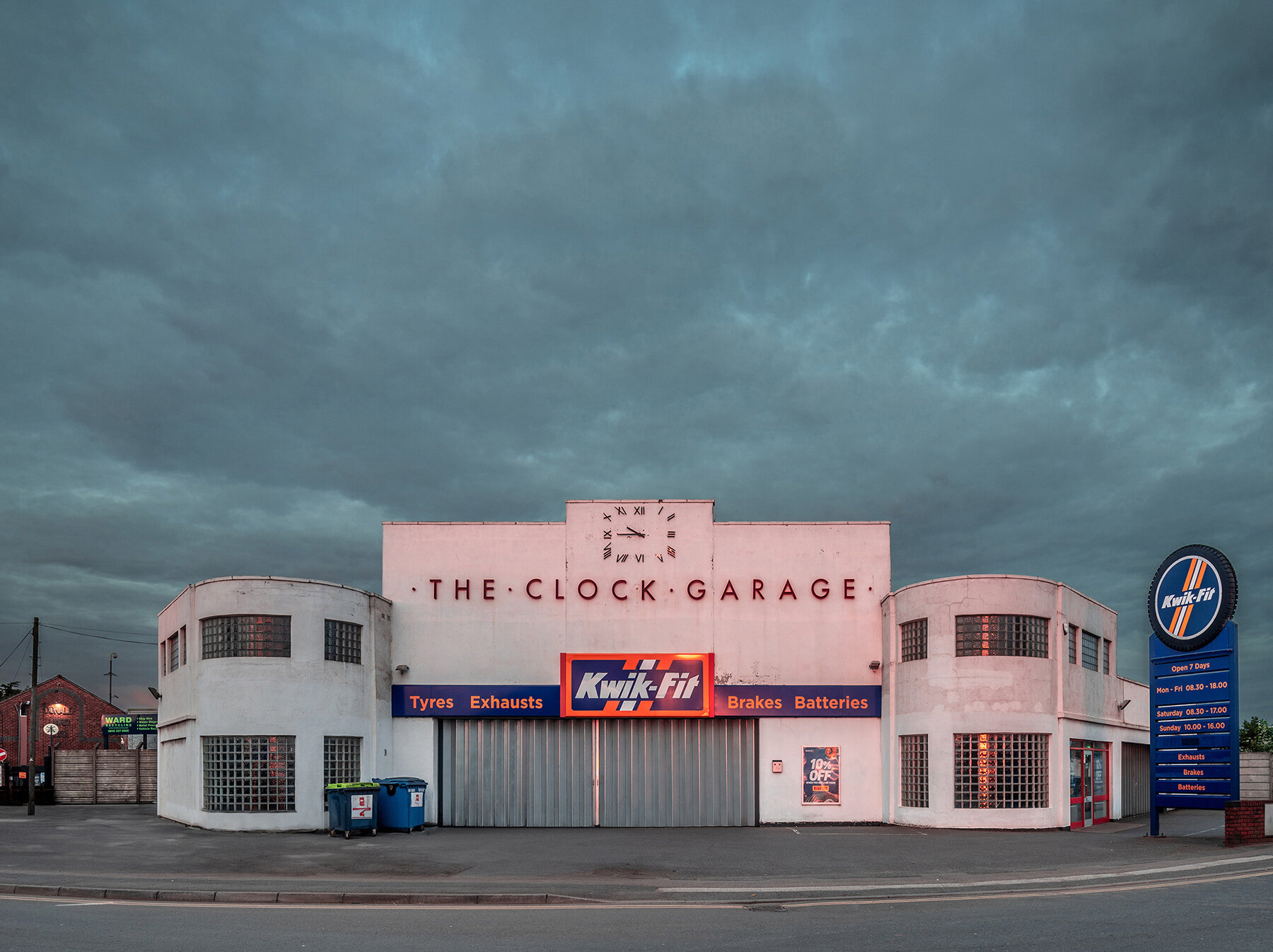philip butler captures britain’s petrol age through 226 garages and service stations
Philip Butler Frames an Architectural Vernacular
Photographer Philip Butler turns his lens on a vanishing piece of Britain’s built landscape in his book 226 Garages and Service Stations. The publication catalogues the nation’s petrol age in 252 pages, capturing an architectural lineage that spans Mock-Tudor fantasies, streamlined moderne curves, and humble repair shops tucked into railway arches or converted chapels. Published in the spirit of Ed Ruscha’s Twentysix Gasoline Stations (1963), Butler’s survey reveals how the evolution of motoring shaped the architectural vernacular of the 20th century.

Black Cat Garage, Bampton, Devon c.1930 | all images by Philip Butler
226 Garages and Service Stations highlights adaptive reuse
Worcestershire-based photographer Philip Butler also highlights adaptive reuse through 226 Garages and Service Stations. As demand for vehicle testing surged in the 1960s, disused cinemas, churches, fire stations, and even factories were pressed into service. St John’s Garage in Wigtownshire, once a Presbyterian church, and a former fire station at Hythe, illustrate the improvisational quality of British motoring infrastructure. Some abandoned sites found gentler afterlives: a decommissioned filling station in Withypool, Devon, now serves as a tearoom popular with bikers and classic car enthusiasts.
Certain landmarks, however, remain architectural showpieces. Michelin House in Chelsea, completed in 1911 by François Espinasse, fused British Art Nouveau with the French tire company’s branding, its stained glass, glazed terracotta tiles, and tire-shaped cupolas setting a benchmark for corporate architecture. In Leeds, Appleyard’s Neo-Georgian garage by Sir Reginald Blomfield (1932) married municipal formality with automotive convenience, complete with an octagonal hut and circular forecourt.

Manor Road Garage, East Preston, West Sussex, 1934
post-war futurism: concrete canopies and sci-fi silhouettes
As automobiles began to dominate British roads in the early 1900s, garages emerged to service, repair, and refuel these machines. What started as pragmatic structures soon mirrored broader design currents. In the 1920s, concerns over visual blight led to regulations that produced unexpected hybrids: rustic thatched filling stations, like The Garage Marsdon, where petrol pumps stood incongruously beneath combustible roofs. Elsewhere, Black Cat Garage in Devon followed the period’s obsession with faux-medieval beams, while at Brooklands motor circuit, oil companies erected rival pagoda-style kiosks to mark their territory at the racetrack.
By the 1930s, the aerodynamic glamour of the Modernist movement found expression in structures like Manor Road Garage in West Sussex, its rounded corners and flat roofs echoing ocean liners and aircraft. Yet for every statement building, there were understated workshops such as Central Garage Tegryn in Pembrokeshire, modestly disguising pitched roofs behind stepped façades. Post-war Britain brought reinforced concrete into play, as seen in Islington’s 1958 Athenaeum Service Station canopy, whose starship-like silhouette recalls the science fiction craze of the era.
Across these 226 sites, Butler documents the cultural footprint of the combustion engine. As Britain moves toward an electric future, the book preserves the memory of a century when garages and petrol stations were landmarks rooted in their communities.

Former Colyford Filling Station, Devon, 1927-28

8 BP, Red Hill, Leicestershire. Originally Mobil, based on a 1964 design, 1979

Former Athenaeum Service Station, Islington, Greater London c.1955

Former C B Attride Motor Engineers, Broadstairs, Kent c. 1920s

The Garage, Isle Brewers

Four Lanes Garage, Marston, Cheshire

Garage, Southbourne, Dorset

Michelin House, Chelsea, Greater London, 1911

The Clock Garage, Woodville, Derbyshire c.1935

Silver Street Garage, Kedington, Suffolk. Avery Hardoll Pump c.1960s

St John’s Garage 1947, Whithorn, Wigtownshire. Originally St John’s Church, 1892

the book catalogues the nation’s petrol age in 252 pages
project info:
name: 226 Garages and Service Stations
photographer & author: Philip Butler | @pbutlerphotography
publisher: FUEL | @fuelpublishing
The post philip butler captures britain’s petrol age through 226 garages and service stations appeared first on designboom | architecture & design magazine.